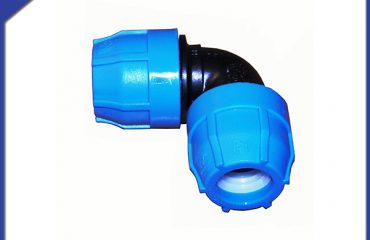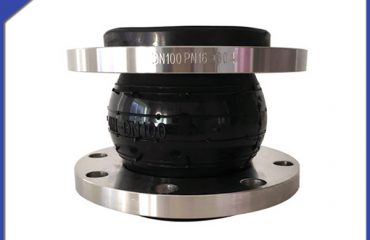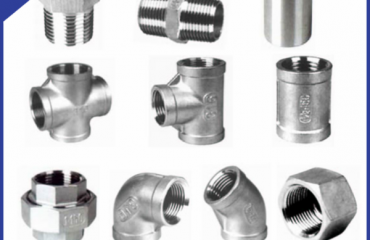
The Difference Between Wrought and Forged Fittings
Metal fittings are integral components in industries ranging from aerospace to construction, designed to connect, support, or control mechanical systems. Among the diverse manufacturing processes, wrought and forged fittings represent two distinct approaches to shaping metal. While both involve plastic deformation, their methods, properties, and applications diverge significantly. This paper explores the key differences between wrought and forged fittings, focusing on manufacturing techniques, mechanical properties, material selection, and industrial use cases.
1. Definition and Manufacturing Processes
1.1 Wrought Fittings
Wrought fittings are produced through processes that involve the mechanical shaping of metal by applying compressive or tensile forces, typically at high temperatures (hot working) or room temperature (cold working). Common wrought processes include:
Rolling: Metal is passed through rollers to reduce thickness or create profiles (e.g., sheets, bars).
Extrusion: Metal is forced through a die to form complex cross-sections (e.g., pipes, channels).
Drawing: Metal is pulled through a die to reduce diameter or create wires.
Stamping: Sheet metal is pressed into shape using dies.
Wrought products often retain a directional grain structure, which can enhance strength in specific directions.
1.2 Forged Fittings
Forged fittings are created through forging, a process where metal is heated and shaped by compressive forces, typically using hammers or presses. Forging can be categorized into:
Open-Die Forging: Metal is shaped between flat or simple dies, allowing for customization but limited precision.
Closed-Die Forging: Metal is pressed into a pre-shaped die, producing intricate and repeatable forms.
Impression-Die Forging: A hybrid approach combining open and closed dies for moderate complexity.
Forging refines the metal’s grain structure, eliminating voids and aligning grains with the part’s geometry, thereby improving mechanical properties.
2. Key Differences
2.1 Microstructure and Mechanical Properties
Wrought Fittings:
Exhibit a directional (anisotropic) grain structure due to the alignment of grains during rolling or extrusion.
Strength and ductility vary depending on the working direction. For example, a rolled steel plate may have higher tensile strength along the rolling direction.
May retain residual stresses from cold working, which can affect dimensional stability.
Forged Fittings:
Feature a uniform, equiaxed grain structure due to the intense deformation during forging.
Offer superior strength, toughness, and fatigue resistance compared to wrought products, as the process breaks down casting defects and refines grains.
Minimal residual stresses, making them ideal for high-stress applications.
2.2 Material Options
Wrought Fittings:
Commonly produced from carbon steel, stainless steel, aluminum, and copper alloys.
Materials with lower ductility, such as cast iron, are less suitable for wrought processes.
Forged Fittings:
Often forged from high-strength alloys like titanium, nickel-based superalloys, and tool steels.
Can handle complex geometries and heavy sections that would crack during wrought processing.
2.3 Design Flexibility and Precision
Wrought Fittings:
Limited design complexity, as processes like rolling or extrusion are best suited for simple shapes (e.g., rods, tubes).
High dimensional accuracy in mass-produced items (e.g., standardized pipes).
Forged Fittings:
Capable of intricate shapes, including internal cavities and undercuts, through closed-die forging.
Requires post-forging machining to achieve tight tolerances.
2.4 Cost and Production Efficiency
Wrought Fittings:
Lower tooling costs and faster production rates, making them cost-effective for high-volume, simple parts.
Example: Rolled steel beams for construction.
Forged Fittings:
Higher upfront costs due to specialized dies and equipment.
More efficient for low-to-medium production runs of complex, high-strength parts.
Example: Aircraft engine components.
2.5 Applications
Wrought Fittings:
Structural components (e.g., I-beams, pipes).
Consumer goods (e.g., aluminum cans, automotive body panels).
Low-stress applications requiring corrosion resistance (e.g., stainless steel tubing).
Forged Fittings:
High-stress mechanical parts (e.g., crankshafts, gears, aircraft landing gear).
Safety-critical components in aerospace, defense, and oil refining.
Tools and dies where hardness and wear resistance are essential.
3. Case Studies
3.1 Automotive Crankshafts
Forged: Crankshafts are typically forged from high-strength steel alloys. The forging process aligns the grain flow with the component’s shape, minimizing stress concentrations and ensuring durability under cyclic loading.
Wrought: A wrought alternative (e.g., machined from a rolled bar) would lack the grain refinement and directional strength of a forged part, increasing the risk of fatigue failure.
3.2 Pipe Fittings in Oil Refineries
Forged: High-pressure valves and flanges in refineries are often forged to withstand extreme temperatures and corrosive environments. Forging eliminates porosity and ensures uniform material properties.
Wrought: Extruded pipes are used for low-pressure sections, leveraging their cost-effectiveness and corrosion resistance (e.g., stainless steel for seawater systems).
3.3 Aerospace Components
Forged: Turbine blades in jet engines are forged from nickel-based superalloys to endure high temperatures and centrifugal forces. The forging process enhances creep resistance and structural integrity.
Wrought: Aluminum alloy sheets (wrought products) are used for aircraft fuselages, balancing lightweight requirements with moderate strength.
4. Regulatory and Quality Standards
Both wrought and forged fittings adhere to industry standards, though requirements differ:
Wrought Fittings: Standards like ASTM A36 (carbon steel) or ASTM B209 (aluminum) specify chemical composition, mechanical properties, and dimensional tolerances.
Forged Fittings: Standards such as ASTM A105 (carbon steel forgings) or ASTM F138 (medical-grade stainless steel) emphasize grain flow, defect detection, and heat treatment protocols.
Testing: Forged fittings often undergo more rigorous non-destructive testing (e.g., ultrasonic or magnetic particle inspection) to ensure internal integrity.
5. Conclusion
The distinction between wrought and forged fittings hinges on their manufacturing processes and resulting properties. Wrought fittings excel in cost-effective, high-volume production of simple shapes, while forged fittings deliver superior strength and reliability for complex, high-stress applications. Engineers must balance factors like material performance, design complexity, and budget when selecting between these methods. As industries demand lighter, stronger, and more durable components, advancements in forging and wrought technologies will continue to shape the future of metal manufacturing.
 Language
Language Espanol
Espanol English
English Italian
Italian عربى
عربى
 Skype: chinamaker99
Skype: chinamaker99  Tel: 86-316-5120812
Tel: 86-316-5120812 Email:
Email:  Whatsapp:
Whatsapp: 

